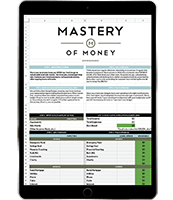For many Americans, owning a piece of Real Estate is “The American Dream.” There is an old saying that tells you “not to pay down someone else’s mortgage.” It’s true that there are many financial benefits to becoming a Homeowner, including building equity, various tax benefits, the potential to rent out the property in the future, among others.
On the flip-side, both the Consumers and Lenders have had a history in this country of poor Real Estate decision making. To ensure that YOU will not be put in a situation where you become desperate, unable to pay the mortgage, needing to go into foreclosure or short-selling the home, you should read through this 10 STEP CHECKLIST full of Best Practices before putting in an offer to buy.
1 – Review Your Credit Report & Credit Score
As you take homeownership more seriously, it is critical to become an expert with your own credit report. What are the items on your report? Do any of them need to be cleared up?
You can access your credit report at www.AnnualCreditReport.com and review it fully to ensure all of the loans listed are correct and the payment history is accurate. Lenders usually offer their best interest rates to folks with FICO Credit Scores in the range of 730+ and tiers going down into the 600’s from there. This could potentially save you tens of thousands of dollars.
2 – Save up a solid Emergency Fund
Do you think it would be a good idea if your Down Payment required you to use ALL of the money you had in Checking & Savings leaving yourself nothing left in cash reserves?
Nope! Not a good idea. What if the roof needs repair? Or the hot water heater? Or the fridge? You’d be stuck using credit cards or emptying out investment and retirement accounts.
Even after paying your Down Payment and any applicable Closing Costs, it is optimal to have 6 Month’s Worth of Bills & Expenses saved up in an Emergency Fund Savings Account. I recommend using an online bank (one that doesn’t have physical branch locations) because they offer free savings accounts and pay the highest possible interest rate to you, the accountholder, while keeping your money “out of sight and out of mind” from your everyday checking accounts.
3 – Prepare for the Monthly Housing Payment
Let’s imagine you’ve been renting for years, and this past year your rent has been $700 per month. You’ve been saving up money, wanting to buy a house, and you know for a fact that your mortgage is going to be HIGHER than the $700 per month you’re paying now.
Suppose if you got into the habit of not only paying $700 in rent, but also depositing $500 to a separate savings account simultaneously (perhaps a savings account nicknamed ‘Down Payment’). If you know that you’ve had many months in a row of successfully paying both your rent ($700) and depositing to the Down Payment Account ($500) then you can confidently assume your cash flow can withstand a $1,200 per month housing payment.
4 – Think through any potential job changes
It would stink if right after you moved into your new home, you unexpectedly had to change jobs or got laid off. How long would it take you to get another job? Where would you get income from? How quick would your Emergency Fund disappear? how much would you be stressing?
It’s important to consider having an even higher balance in your Emergency Fund if you anticipate some potential job changes in the coming years.
5 – Learn About Government Programs and Grants for Which You May Qualify
Throughout the United States, there are both National and Statewide programs that are offered to different categories of individuals and families, as well as for those looking to purchase in certain locations. VA Loans are available for military veterans with an honorable discharge, for example.
Many of these loans have 0% Down Payment options or even Grants where they actually pay YOU a sum of money towards your down payment. Seriously! Take the time to research if you qualify for any of these programs. It could end up being the difference between you becoming a Homeowner or not!
6 – Obtain an Official Pre-Approval from a Mortgage Lender and Examine Your Different Options
This is a step that many folks delay because they don’t think that they are ready yet. Taking this action sooner rather than later allows you, the consumer, to be more educated, informed, and aware of the details on all of your options.
When speaking with a Mortgage Lender, you should find out the FULL SPECTRUM of options available to you. What is the most you qualify for based on your FICO and Debt-To-Income? What is the least % you could put down? What are the interest rates on different loan options?
The most important detail in this step is to have a few examples of potential homes you are interested in, and to work with the Mortgage Lender to examine, in detail, different down payment options, and what the corresponding All-In monthly payment would be on these properties. Remember, the All-In monthly payment includes PITI (Principal, Interest, Taxes, and Insurance)
For example, perhaps you could purchase a $300,000 home with a 20% Down Payment ($60,000) and the monthly payment all-in is $1,800 per month. In that same example, the Mortgage Lender may also educate you that you could put 5% Down ($15,000) and the corresponding mortgage payment would be $2,050. Being able to evaluate the Pros and Cons of these options is critical to stress-test what is best for you.
7 – Save / Allocate for the Necessary Down Payment
No brainer here – you have to save up enough for the Down Payment and closing costs. Don’t forget about hiring movers and additional furnishings for the new home. Planning ahead here is super important to not be surprised by unexpected costs.
You should not have your Down Payment exposed to the stock market. Since markets can drop quickly and significantly, if you plan on purchasing real estate soon, your dollars are safer and better off in an Online Savings Account staying liquid, earning some interest, and avoiding market risk.
It is a myth that you NEED to have 20% down payment in order to purchase a home. It is perfectly OK to examine Down Payment options in the 3% or 5% range, just make sure to consider all the other items on this list.
8 – Identify a Real Estate Agent to work with
This relationship is very important. Remember, as the buyer, you do not pay anything to use a realtor –the seller of the property pays! Realtors must act in your best interest by properly representing you in negotiating bids, filing any and all required initial paperwork, and being your partner throughout the entire homebuying process.
The realtor should have expertise in the neighborhoods you’re interested in and able to provide insight, knowledge, and guidance as you look for homes that “check the boxes” on your wish list. They help negotiate purchase price. It is also ideal that the Realtor and Mortgage Lender have open communication and can work altogether to help you purchase your home.
Not having a strong realtor could leave you wasting time going to open houses that don’t even fit your profile or being unable to move forward once you find your ideal home. Be sure to properly vet a few agents or ask for a recommendation from a trusted professional.
9 – Know Your Game Plan and Exit Plan Options
It is foolish to purchase Real Estate without thinking through potential exit strategies. You should ask yourself, “How long do I plan on living here?” as well as “Would I ever be able to move out and rent this property to cover all expenses?”
Whether this home is potentially your “forever home” meaning the place where you may even raise your family, or if it is just a stepping-stone on your path towards owning multiple real estate properties, acknowledging your plan and potential choices can be extremely valuable in helping you make the most optimal decisions. On the other hand, not thinking this through can leave you exposed to potential
10 – Protect Yourself With The Right Insurance
What Insurance policies are most important to consider?
If you have a mortgage, you will be required to have Homeowners Insurance, to replace the cost of your home if it is lost in a fire or otherwise destroyed. Additionally, I suggest looking into Umbrella Insurance (sold by the $1,000,000 increment) which is excess liability insurance in the event of a lawsuit around your home or in your car. Otherwise, what if you get sued and have all of your assets at risk of loss!
You’ll also want to make sure you have both proper Health Insurance and Disability Insurance Plans. What if you get sick or hurt and can not work? Your Health Insurance kicks in to counter the cost of Medical Bills – but more importantly is asking yourself “What would happen to my paycheck?” or “How much money do I make even if I’m sick or hurt and can’t work?”
Lastly, Life Insurance is an important consideration as well. This real estate that you are purchasing may be an asset that you work very hard to earn – and feel that it deserves to stay in your family even if you pass away prematurely. Individual Term Life Insurance can make sure the mortgage gets paid off and that your loved ones would inherit the property based on rules that you set up in your Will and Estate Plan.
Ultimately, working your way down this list step-by-step, whether you are single or working with your partner, will allow you to confidently Own Real Estate – and ensure that you will not be put in a crappy situation in the future where you would ever have to consider foreclosure, short sale, or losing the home. Let’s ensure that the steps you take to build wealth and mature financially are made with confidence and that you don’t miss any steps along the way.
By Dimitry Neyshtadt ChFC




